In the corporate sector, sales figures are essential to evaluate performance and forecast future trends. While tracking the effectiveness of a sales plan, understanding sales data is necessary to encourage growth and make informed decisions.
Utilizing market data, industry surveys, and expert analysis provides a thorough picture of the state of sales in 2024. Read on to discover the trends and sales statistics that impact businesses, along with tips on comprehending this data to formulate strategic plans.
Let’s dive into it!
Sales Prospecting Statistics
Prospecting is regarded as the backbone of any effective sales team, but it comes with challenges.
Businesses must remember that prospecting is a crucial step in the sales process, and companies who excel at it have a higher success rate. Here are some sales prospecting statistics to identify the best channels and practical approaches to prospecting.
1. Due to the time and effort required, prospecting is part of the sales process that over 50% of salespeople struggle with. (SuperOffice)
2. Buyers are willing to interact with salespeople in person at industry events (34%), via SMS (21%), LinkedIn (21%), and social media (18%). (Twoosk)
3. Email is about 40 times more successful in gaining clients than social media. (Hunter.io)
4. Just 13% of clients feel a salesperson can comprehend their wants. (Brevet)
5. In 2023, 38% of salespeople want to concentrate on consultative selling. To be able to do this, you need to understand your customer in the prospecting stage itself by categorizing them based on their area of expertise, region, designation, etc. (LeadSquared)
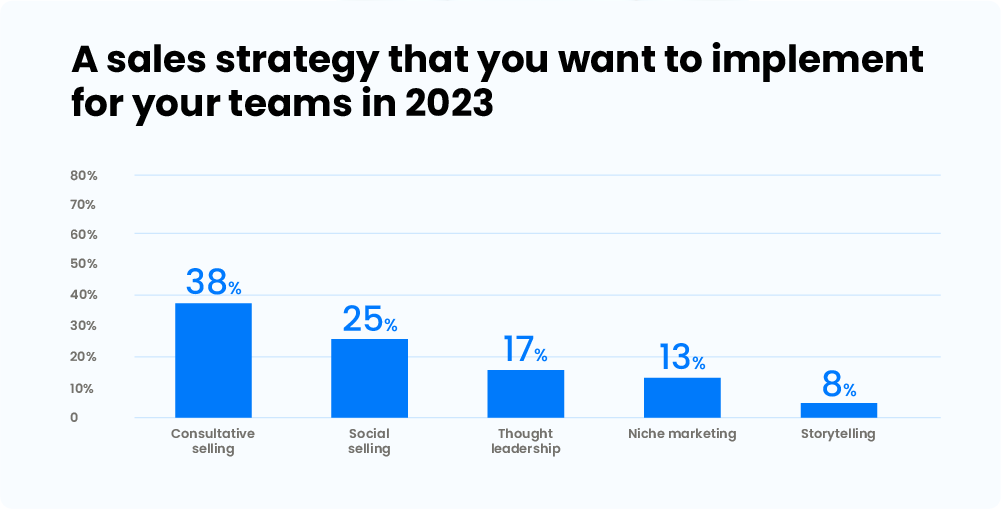
Tips to improve prospecting:
Sales professionals must have a robust prospecting strategy to target people at the right time. Effective prospecting involves researching the market, identifying ideal customers, and using various communication channels to reach out to them.
LinkedIn, SMS, and social media are emerging as the most popular prospecting channels, indicating that sales professionals need to build a strong online presence and leverage technology to connect with potential buyers.
By focusing on consultative selling, sales professionals can build stronger relationships with customers, understand their needs, and provide personalized solutions that meet their specific requirements.
No one likes being sold to, not even salespeople themselves. Try to cater to your prospect’s interests before reading your entire pitch. This challenge arises during demos when salespeople forget that the customer is looking for a solution, not a list of random features they don’t understand.
Piyush Sharma
Manager – Business Development & GTM, CloudSEK
Let’s look at the next stage, engaging your prospects so they convert soon!
Sales Nurturing and Follow up Statistics
Establishing first contact with a potential customer is essential in the sales process. Sales teams must develop effective ways of contacting customers quickly, such as utilizing chatbots, automated email responses, and scheduling tools.
1. 82% of clients want a response to their inquiry within ten minutes. (ServiceBell)
2. According to 31% of salespeople, distributing leads to reps based on their areas of expertise might be beneficial. (LeadSquared)
3. 38% of salespeople don’t know which leads to contact first, and they perceive this as the major obstacle that slows down telesales. (LeadSquared)
4. Top sales reps spend 55% of the time during a discovery call listening to the prospect instead of making a pitch or talking about their product. (Mindtickle)
5. 95% of customers complete a purchase with a business that provides them with relevant resources to help them at each stage of the purchase process. (SlideShare)
6. It needs 5–10 touchpoints to close a deal, according to a LeadSquared research. Nonetheless, some salespeople stop after a few tries. (LeadSquared)
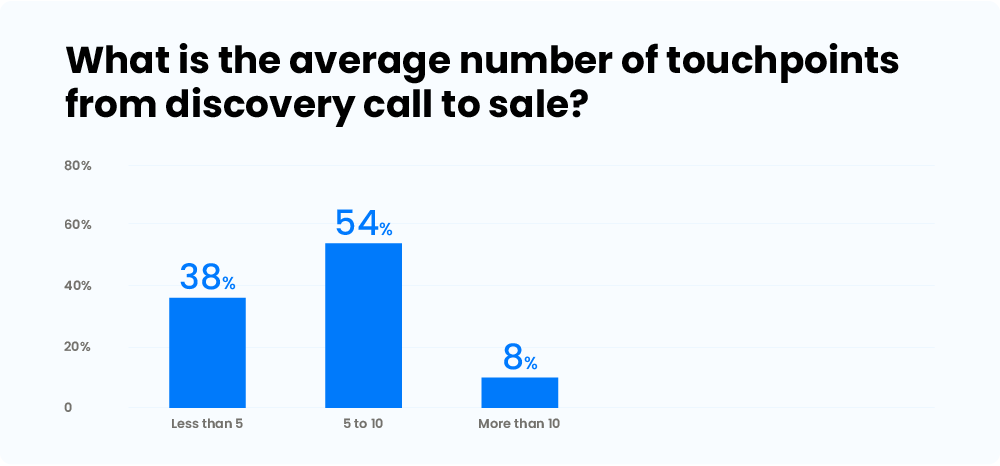
7. 80% of sales are concluded after at least five follow-up meetings after the initial meeting. This highlights the importance of scheduling necessary actions and developing a detailed sales cadence. (Brevet)
Tips for building an effective lead nurturing strategy:
Like every other stage in the sales process, follow-up and nurturing need to be hyper-personalized. The first step to personalization is to allocate leads based on the unique skills that your sales representatives possess. It allows salespeople to leverage their specialized knowledge and experience to engage with the most relevant leads.
Additionally, utilizing data like demographic information and historical buying patterns can aid in prioritizing potential clients.
As a salesperson, you cannot miss following up with your customers. And managers need to ensure that salespeople have the tools and resources to follow up effectively. These include reminders (using a CRM) and a sales enablement strategy.
Sales representatives should take less time toward speaking and more towards listening during the initial stage of client engagement. By following this tactic, potential customers are granted ample opportunity to voice their opinions, which can help foster a stronger connection between them and the representative.
Sales Outreach Statistics
According to a LeadSquared survey, sales managers consider goal orientation (31%), data-centricity (24%), people-centricity (24%), and flexibility (20%) to be critical components of an effective sales strategy, regardless of the channel used for outreach, whether it be inside sales, field sales, or social selling. These factors can help improve quota attainment and overall sales success for companies.
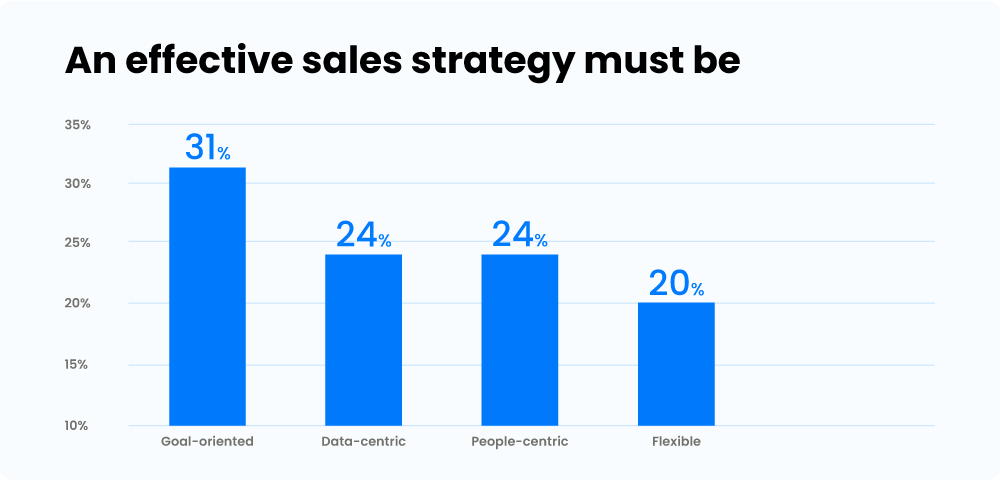
Inside Sales
1. 37% of salespeople closed deals of $500,000 or more without meeting the customer in person. (LeadSquared)
2. Companies with inside sales reps on their sales teams achieve their quotas at a rate that is 9.8% greater than those with outside sales reps on their sales teams. (LeadSquared)
Field Sales
1. More than 70% of B2B customers are ready for virtual meetings but no longer want face-to-face interactions with salespeople. (McKinsey and Company)
2. Traditional B2B sales made in person have decreased by 52% after COVID-19. (Commercetools)
Social selling
1. 70% of salespeople think LinkedIn is the best medium for connecting with customers, building their brands, and promoting their businesses’ brands. (LeadSquared)
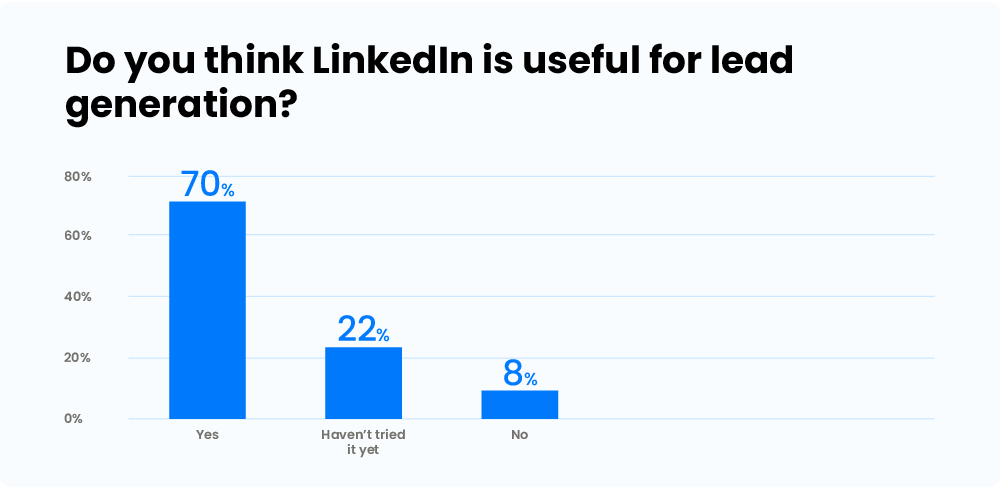
2. More than 10% of social sales representatives have completed five or more deals due to being active on social media platforms. (OptinMonster)
Tips to improve sales outreach:
Inside sales is becoming more prevalent in the sales industry, and sales reps must adapt their approach to match this trend. A solution to this is incorporating Customer Relationship Management (CRM) software into your sales strategy.
CRM helps sales reps manage customer relationships and track interactions, providing a more personalized approach to each lead. Sales reps can have access to relevant information about each customer, such as their purchase history, interests, and preferences, allowing them to tailor their approach and engage more effectively.
On the other hand, field sales have been affected by the COVID-19 pandemic. However, everyone is open to virtual meetings, and sales reps can find alternative ways to engage with their clients and close deals. One solution is utilizing social selling to create personalized outreaches and drive sales revenue.
In case you still prefer continuing with field sales, a mobile CRM can help sales teams collaborate and share information about customers, enabling them to provide a consistent and personalized experience across the entire sales cycle. Managers can also track the productivity and location of each sales rep.
Here are some of the high-impact CRMs that you can choose from:
After an effective sales outreach comes the most stressful stage of the sales process—the negotiation and closure. Here are a few statistics and tips to help you improve this stage.
Sales Negotiation and Closure Statistics
Sales negotiation is a crucial skill that every salesperson must master to succeed in today’s competitive business environment. However, converting leads into paying customers is no easy task.
1. Just 15 to 30 leads out of every 100 that a company generates will turn into paying clients. (Kixie)
2. Achieving quota and target transaction size is three times more likely for top salespeople and negotiators. Customers are also 12.5 times more likely to be delighted with the outcome of the trade. (Unique)
Tips for Positive Outcomes:
Here are some strategies that businesses can use to enable and train their sales teams to become top performers in sales negotiation and increase their conversion rates:
1. Provide regular sales training: Sales negotiation skills are tough but can be learned and improved through training.
2. Encourage continuous learning: Businesses should encourage their sales teams to stay updated with the latest industry trends and best practices. This can be done through webinars, seminars, workshops, and online courses.
3. Set clear sales goals: Setting clear sales goals and targets can help sales teams to focus their efforts and prioritize their work.
4. Leverage data and analytics: Businesses can use data and analytics with the help of a CRM to identify areas where their sales teams are struggling and provide targeted training and support to address those issues.
5. Provide ongoing feedback and support: Providing ongoing feedback and support to sales teams can help them to improve their performance and develop their skills over time.
By implementing these strategies, businesses can enable and train their sales teams to become top performers in sales negotiation and increase their conversion rates.
Sales Productivity and Reporting Statistics
Sales managers and leaders looking to improve their team’s productivity can use these statistics to inform their strategies and address potential challenges hindering their team’s success.
1. Regarding monitoring sales pipeline activity, 25% of salespeople refer to a leaderboard, and 50% use sales performance dashboards. (LeadSquared)
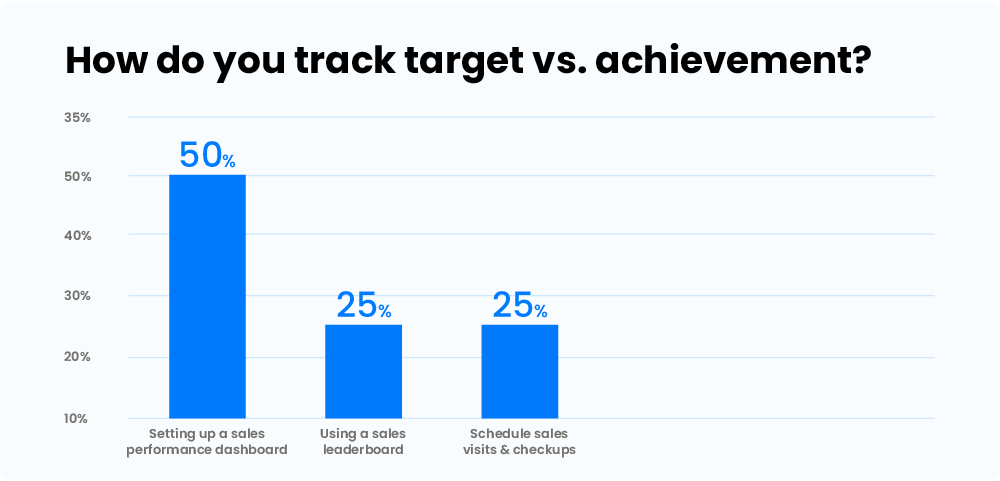
2. 71% of sales representatives have expressed that they dedicate an excessive amount of time on data entry. (Heinz Marketing)
3. For new clients, the typical sales cycle lasts between 4 to 6 months. Businesses must shorten the sales cycle to boost sales income. (Navattic)
4. 43% of sales managers believe that the opportunity-to-win rate is the most important sales KPI to assess the productivity and accountability of their telesales teams. (LeadSquared)
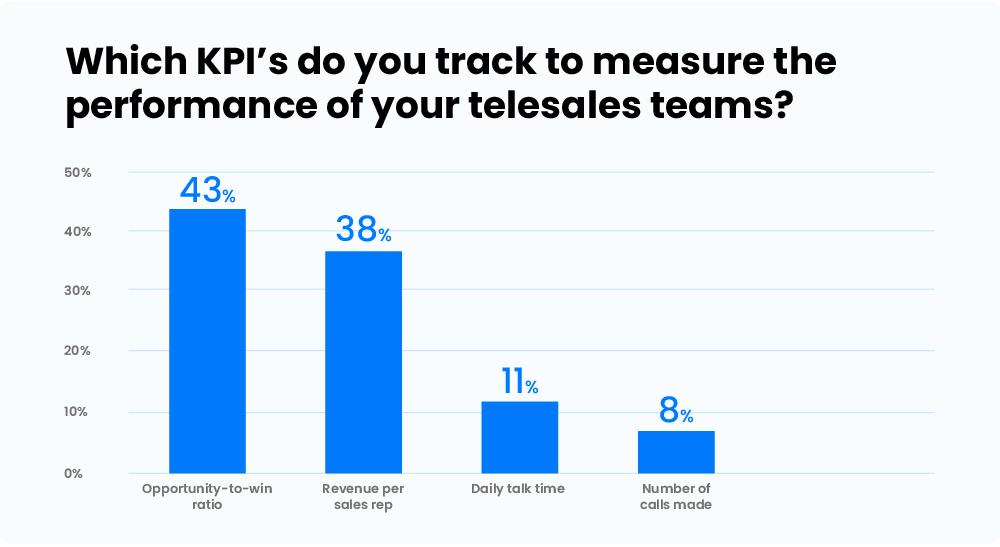
5. 53% of sales representatives examine their ongoing sales approach monthly to identify improvement. (LeadSquared)
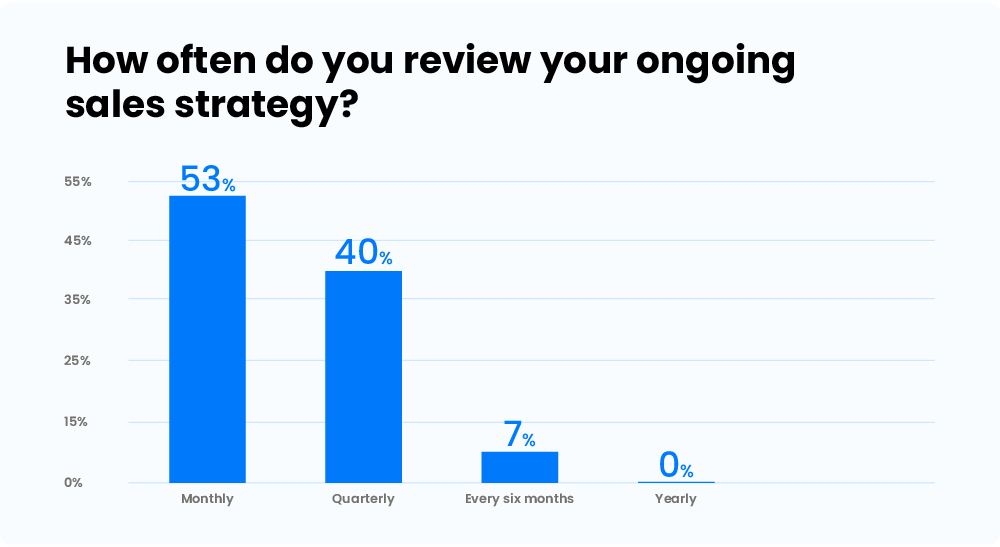
6. Target pressure was cited as the most difficult component of the job by 41% of salespeople. (LeadSquared).
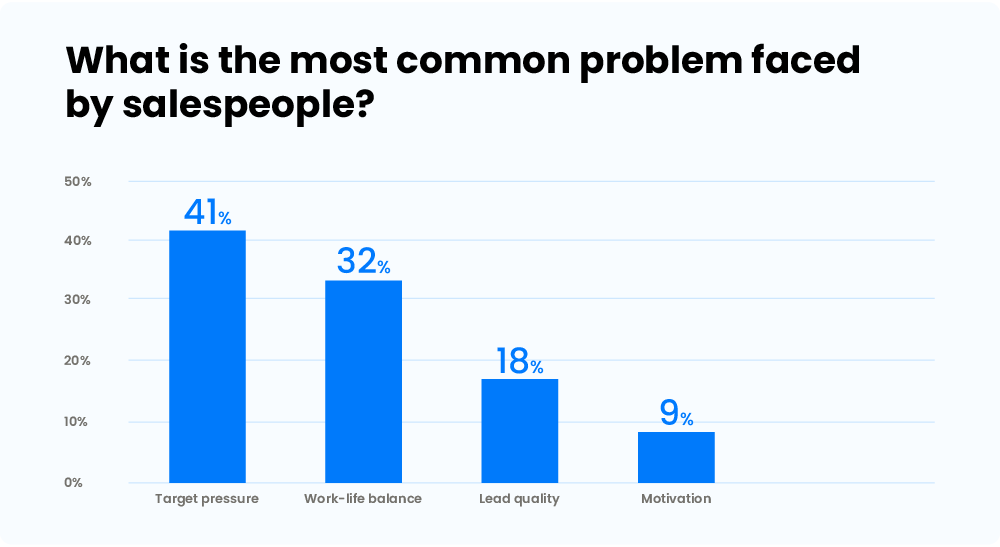
Tips to boost sales productivity:
Sales performance dashboards and leaderboards can provide valuable insights into team performance, highlighting areas where improvements can be made. By using these tools, sales managers can evaluate their team’s performance, decrease the length of sales cycles, and track relevant KPIs.
Understanding the challenges faced by sales reps, like target pressure, was cited as the most challenging component of the job.
I’m always empathetic with my team. I never scream or grill anyone. I listen to their problems and motivate them by showing the growth that lies ahead. Often, I ask them to make calls not to complete talk time but to book meetings. For me, quality is more important than quantity. If my team members make fewer calls but still could meet their targets, I’m totally okay with it.
Sahil Sansarwal
Team Lead – Sales Development (US), LeadSquared
One potential solution to target pressure is sales automation, which can help alleviate the administrative burden on sales reps and allow them to focus more on selling.
Sales Automation Statistics
Sales automation is becoming increasingly popular among sales teams to improve efficiency and productivity. To harness the benefits of sales automation, businesses should start by identifying their sales process and where automation can be implemented to streamline tasks and reduce manual labor.
This can include automating lead nurturing, email follow-ups, and appointment scheduling. Additionally, businesses should invest in a CRM that offers extensive customizations and workflow builders to improve revenue and conversions.
In a few years, technology will advance to the point where smaller businesses can put together a stack of sales tech that rivals that of a large business spending a lot of money on a custom Salesforce setup. This will allow them to run a more efficient and effective sales team.
Rishabh Ladha, Co-Founder, SquadStack
1. 58% of the devoted salespeople that our team contacted believe that implementing sales automation increases sales productivity. (LeadSquared)
2. According to a LeadSquared report, sales automation also reduced human mistake rates by 19%. (LeadSquared)
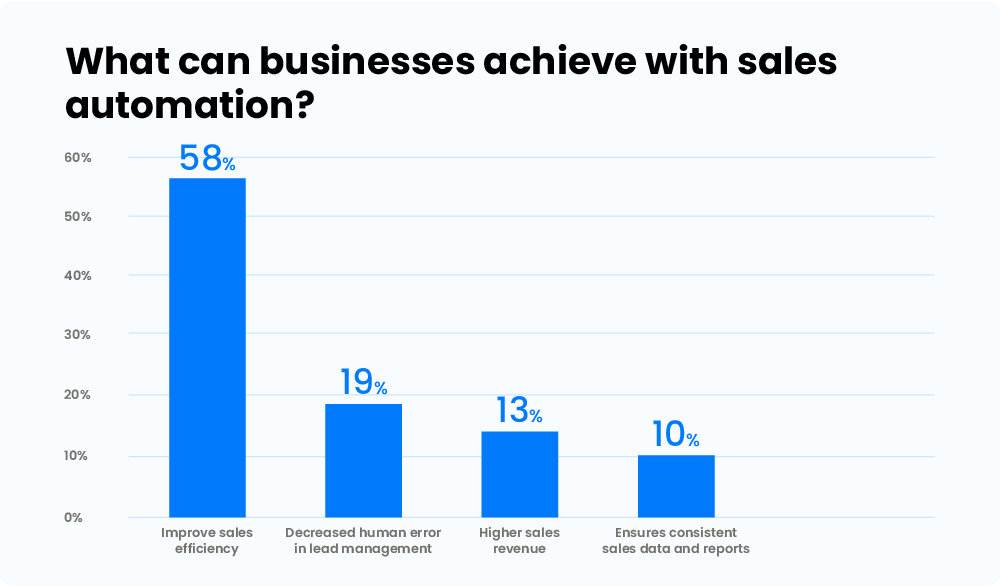
3. It has been demonstrated that CRM’s comprehensive customizations and workflow builders increase revenue by 29% and conversions by 300%. (Thrivemyway)
4. More than 3000 of our sales users participated in a survey that we carried out. Lead management and reporting appear to be the two services that our users like using the most. (LeadSquared)
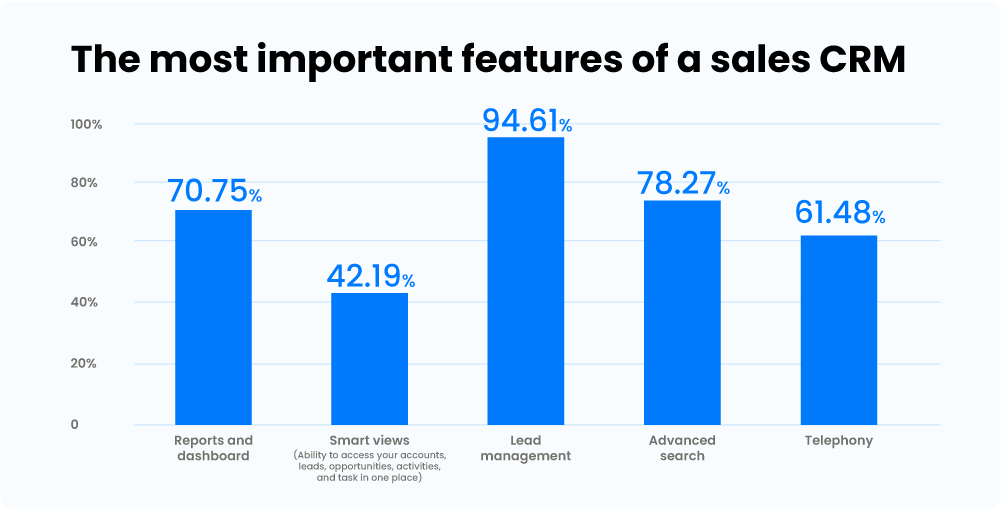
Tips to automate sales activities:
By using automation tools to manage repetitive tasks, sales teams can focus on more critical tasks, such as building relationships with potential customers and closing deals.
Lead management and reporting are critical features for sales teams as they provide insight into the performance of their sales process. To maximize the benefits of these features, businesses can ensure that their CRM is set up to capture and track lead data accurately. This includes assigning leads to the correct sales representatives, tracking the progress of leads through the sales funnel, and using data analytics to gain insights into areas for improvement.
By clearly understanding their leads and sales pipeline, sales teams can optimize their efforts to improve conversions and drive revenue. LeadSquared, our CRM platform, offers a range of features, including lead management and reporting, to help businesses achieve their sales goals.
To begin your journey towards optimizing sales functions, get in touch with our team.










